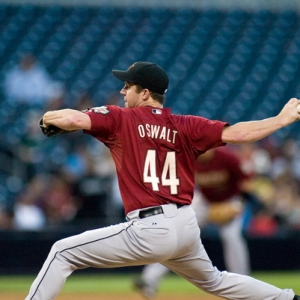How Do MLB Standings Work?
by Matt Severance - 7/22/2009
![]()

Most everyone is pretty familiar with how the standard Major League Baseball standings work - after all, it's not like the NHL where there are extra categories like shootout losses. But we can all use a refresher on some of the more subtleties of MLB standings, so that's why we're here today.
First off, let's look at the actual schedule. MLB instituted an unbalanced schedule in 2001. That basically means teams play opponents in their division more than they previously had. It usually means some 17-19 games in the division. That's obviously a huge advantage for a team like the L.A. Dodgers this season, as they play in the pretty weak NL West. Meanwhile, the Rays, Red Sox and Yankees all have to beat up on each other 18 times a year in the AL East, while teams like the Jays and Orioles have no shot in that division playing some 50-plus games against those three contenders.
Of course interleague scheduling adds another issue because of designated rivals. So the Cardinals get to play the annually lousy Royals six games a year, while the Mets have to face the powerful Yankees that many times.
Outside of interleague (18 games for each team) and the unbalanced schedule, teams generally play 6-7 games against the other teams in their league, with one visit to each city guaranteed.
When it comes to postseason play, it's pretty simple: Each division winner gets in. If there is a tie for the division at the end of the season, there is a one-game playoff, as there was in 2008 between the White Sox and Twins.
The final playoff spot in each league is the Wild Card, and that's simply determined by the team with the best record in the league that isn't a division winner. Again, if there's a tie in this case, there would be a one-game playoff.
Through the 2008 season, home-field advantage for one-game playoffs was determined by a coin flip, but effective in 2009 home advantage is based on tiebreakers, with the first being head-to-head record between the two teams. These games, by the way, are technically still regular-season games and not classified as true postseason games.
Home-field advantage in the playoffs always goes to the team with the better record - at least through each league's championship series. The team with the best record faces the Wild-Card club in the division series unless that Wild-Card team is from the same division as the No. 1 overall seed. This was done so MLB could keep the integrity of a division title race.
The league that wins the All-Star Game gets home-field advantage in the World Series. That rule was instituted for the 2003 Midsummer Classic after the 2002 game ended in a tie. The AL has won every All-Star Game since then and thus has had home field in the World Series. But the NL has managed to win three of those six World Series, including the Phillies last year.
Determining the MLB Draft order is pretty simple: It's in inverse order of the regular-season standings. However, if more than one team has the same record, then you go back one more season and compare those records. Whatever team finished with a worse record in that case would get the higher pick, and so on.
Until the middle of this decade, AL teams and NL teams would take turns picking first overall, but now just the team with the worst overall record gets it -- so the Nationals are virtually guaranteed to have the No. 1 overall pick again next year.
Most Recent Baseball Handicapping
- 6 MLB Coaches Who Were Better Players Than Skippers
- 65 MLB Financial Statistics for 2025
- Five MLB Players Who Went from MVP Talks to Out of the League
- MLB Prospects Who Were Hyped as the Next Big Thing and Flopped
- Best Bets for Teams to Make the MLB Playoffs: Yes or No Props
- 5 Underperforming MLB Pitchers who Dominated in the Postseason
- Six MLB One Season Wonders Who Fell Off Fast
- Top 6 Forgotten MLB Postseason Clutch Performances
- MLB Season Awards with Updated Odds and Predictions
- Chicago Cubs vs Houston Astros Weekend Series Predictions with Odds and Analysis
